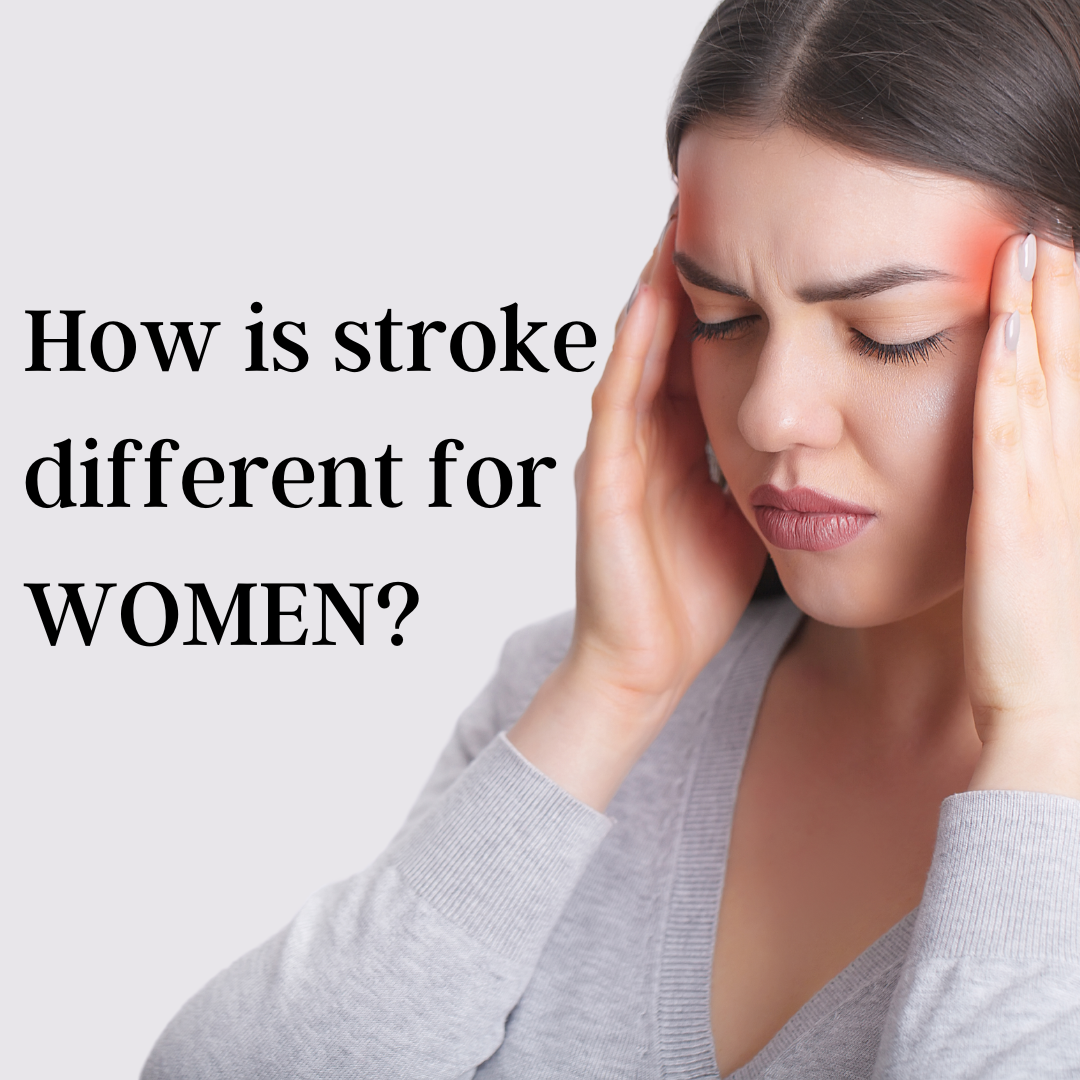Understanding Women’s Stroke Risk
Did you know that 1 in 5 women between the ages of 55 and 75 will experience a stroke (CDC, 2024). You might be alarmed to find out that woman have been reported to have more severe nervous system injury, higher morbidity and mortality, and greater post-stroke deficits compared to men (Zhong, et al., 2023). Despite these alarming statistic, many women underestimate their susceptibility to stroke. We know women have a heightened stroke risk compared to men, but why??
Estrogen and Stroke
Estrogen, a female sex-based hormone, produces a number of physiological actions in female bodies, including developmental effects, controlling ovulation and cyclic changes in the female reproductive tract, and actions on nearly all tissues, especially the central nervous system (Keegan, 2019). Research suggests that changes in homeostasis of estrogen affects a women’s risk of stroke. These changes occur naturally during a woman’s lifespan, especially in pregnancy, or can change with use of birth control or post menopausal estrogen supplementation.
A woman’s reproductive lifespan (defined as a time from menarche to menopause), which reflects endogenous estrogen exposure, is closely related to stroke risk (Mishra, et al., 2020). Early or late onset of menstruation and premature or early menopause can all impact the likelihood of experiencing a stroke later in life (Mishra et al., 2020). Women with a reproductive life span of less than 30 years have a 75% higher risk of stroke than those with reproductive life span of 36-38 years (Mishra et al., 2020).
Pregnancy presents a unique risk factor, with pregnant women being over three times more likely to suffer a stroke than their non-pregnant counterparts. Conditions like preeclampsia, eclampsia, and gestational diabetes further heighten this risk. The dangerous condition of high blood pressure experiences during preeclampsia can increase a woman’s risk of stroke by 5.2 times, not only during pregnancy but also for future strokes (Leffert, et al., 2015).
The use of certain medications, such as birth control and hormone replacement therapy, can also double the risk of stroke in women. It’s noteworthy that progestin-only pills do not increase the risk of ischemic stroke. Oral menopausal hormone replacement therapy increases a women’s stroke risk, however, transdermal hormone replacement therapy with low doses of estrogen appears to carry a lower stroke risk compared to oral administration (Mason et al, 2013).
Lifestyle Choices
Certain lifestyle choices and health conditions further escalate stroke risk in women. For instance, women who experience migraines with aura face an elevated risk, considering that migraine prevalence is notably higher among women. Women who take oral contraceptives and smoke also face a heightened stroke risk.
One of the leading precursors to stroke is high blood pressure, affecting nearly 40% of women either through elevated blood pressure levels or medication. Additionally, reproductive factors such as oral contraceptives, pregnancy, and post-menopausal hormone therapy can amplify stroke susceptibility (CDC, 2024).
Obesity also poses a significant risk factor, with obese women exhibiting a greater prevalence of ischemic stroke compared to men (Yoon & Bushnell, 2023).
How to Reduce Your Risk of Stroke
Recognizing these risk factors is crucial, but equally important is knowing how to mitigate them:
- Consult your healthcare provider to determine the safest medication if you’re pregnant and have high blood pressure.
- Discuss low-dose aspirin guidelines with your healthcare provider starting in the second trimester to reduce the risk of preeclampsia.
- Regularly monitor your blood pressure, especially before initiating birth control pills, and monitor it every six months thereafter.
- Consider transdermal hormone replacement therapy as an alternative to oral therapy after consulting with your healthcare provider.
- If you experience migraines with aura, quitting smoking can help reduce your stroke risk.
Know the Warning Signs
Recognizing the warning signs of a stroke and seeking immediate medical attention are paramount. Remember the acronym “FAST”:
- Face: Check for drooping on one side of the face.
- Arms: Assess if one arm drifts downward when lifted.
- Speech: Listen for slurred or strange speech.
- Time: Act quickly; call 911 at the first sign of these symptoms.
Conclusion
Delaying medical care for stroke symptoms can result in irreversible brain damage or even death. Seeking prompt treatment is essential, as certain interventions, such as clot-dissolving medications or endovascular therapy, are time-sensitive and significantly improve outcomes when administered promptly. Remember, time is of the essence when it comes to stroke treatment.
References
CDC. Retrieved May 8, 2024. Available at CDC.com
Keegan, M.T. (2019). Endocrine Pharmacologys. Pharmacology and Physiology for Anesthesia (2nd ed.). https://doi.org/10.1016/B978-0-323-48110-6.00036-3.
Leffert LR, Clancy CR, Bateman BT, Bryant AS, Kuklina EV. Hypertensive disorders and pregnancy-related stroke: frequency, trends, risk factors, and outcomes. Obstet Gynecol. 2015;125:124–131.
Manson JE, Chlebowski RT, Stefanick ML, Aragaki AK, Rossouw JE, Prentice RL, et al. Menopausal hormone therapy and health outcomes during the intervention and extended poststopping phases of the Women’s Health Initiative randomized trials. JAMA. 2013;310:1353–1368.
Mishra SR, Chung HF, Waller M, Dobson AJ, Greenwood DC, Cade JE, et al. Association between reproductive life span and incident nonfatal cardiovascular disease: a pooled analysis of individual patient data from 12 studies. JAMA Cardiol. 2020;5:1410–1418.
Yoon CW, Bushnell CD. Stroke in Women: A Review Focused on Epidemiology, Risk Factors, and Outcomes. J Stroke. 2023 Jan;25(1):2-15. doi: 10.5853/jos.2022.03468. Epub 2023 Jan 31. PMID: 36746378; PMCID: PMC9911842.
Zhong, X., Sun, Y., Lu, Y., Lei, X. (24 April 2023). Immunomodulatory role of estrogen in ischemic stroke: neuroinflammation and effect of sex. Frontiers in Immunology, Vol. 14. Retrieved 8 May 2024 at https://doi.org/10.3389/fimmu.2023.1164258
